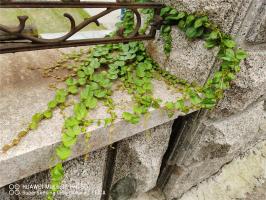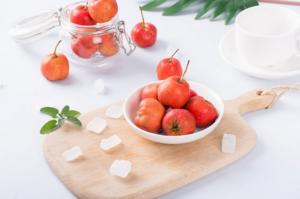Introduction
Tomato plants are among the most widely grown plants in both home gardens and commercial farms. They are known for their juicy and delicious fruits that are packed with essential nutrients. However, sometimes tomato growers may notice that their plants' leaves begin to curl up, which can be a cause for concern. In this article, we will explore the reasons why tomato plant leaves curl up and provide some tips on how to prevent it.
Causes of Tomato Plant Leaf Curling
Viral Infection
One of the most common causes of tomato plant leaf curling is viral infections. Several different viruses can cause this symptom, including tomato yellow leaf curl virus, tomato mosaic virus, and cucumber mosaic virus. These viruses can spread quickly in tomato plants, leading to stunted growth and poor fruit quality. Unfortunately, there is no cure for viral infections, so the best approach is to prevent them from occurring in the first place. Growers should practice good hygiene by regularly cleaning tools and equipment and rotating crops to prevent the buildup of soil-borne pathogens.
Environmental Stress
Another common cause of tomato plant leaf curling is environmental stress. Tomatoes are quite sensitive to changes in temperature, humidity, and light, and any significant change can cause their leaves to curl inward or outward. For instance, when temperatures rise above 85℉, tomato plants may begin to wilt and curl up their leaves to conserve moisture. Similarly, insufficient watering, exposure to direct sunlight, and extreme humidity can all cause leaf curling. To prevent environmental stress, tomato growers should keep their plants in a cool and shaded area, water them regularly, and provide adequate ventilation.
Pest Infestation
Tomato plants are vulnerable to a variety of pests, including spider mites, whiteflies, and aphids, all of which can cause leaf curling. These pests feed on the sap of the tomato plant, causing the leaves to curl up and change color. To prevent pest infestations, tomato growers should regularly inspect their plants for signs of infestation, such as yellowing or discolored leaves, stunted growth, and curled leaves. If detected early, pests can be removed manually or treated with insecticidal soap.
Preventing Tomato Plant Leaf Curling
Proper Irrigation
One of the best ways to prevent tomato plant leaf curling is to provide adequate irrigation. Tomato plants require a consistent supply of water to grow healthy and strong, and inadequate watering can cause leaf curling. Growers should water their plants deeply and regularly, making sure that the soil is moist but not waterlogged. Additionally, growers should avoid getting water on the foliage, as this can promote the growth of fungal diseases.
Maintain Optimum Temperature and Humidity
Tomato plants grow best in moderate temperatures of around 70-80℉ and humidity levels of around 50-70%. Growers should provide appropriate shading and ventilation to keep the temperature and humidity within these parameters. Additionally, airflow can help to prevent the growth of fungal diseases, so growers should ensure that their plants are adequately ventilated.
Regularly Inspect for Pests and Diseases
To prevent pest infestations and viral infections, tomato growers should practice regular plant inspections. Inspect the plants for any signs of insect infestations, such as webbing or stunted growth. Check for viral infections, such as yellowing or discoloration of leaves or stunted growth. If pests or viruses are detected, take immediate action to remove the infected plant or treat it with an insecticide or fungicide.
Conclusion
Tomato plant leaf curling is a common problem that can be caused by a variety of factors, including viral infections, environmental stress, and pest infestations. By taking preventive measures such as maintaining proper irrigation, temperature, and humidity levels, and regularly inspecting plants for pests and diseases, tomato growers can ensure that their plants stay healthy and produce bountiful fruit.

 how many times do yo...
how many times do yo... how many planted tre...
how many planted tre... how many pine trees ...
how many pine trees ... how many pecan trees...
how many pecan trees... how many plants comp...
how many plants comp... how many plants can ...
how many plants can ... how many plants and ...
how many plants and ... how many pepper plan...
how many pepper plan...































